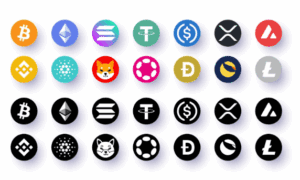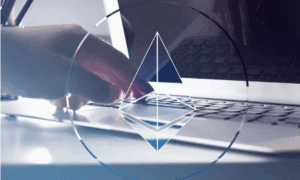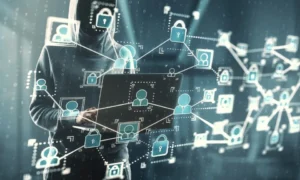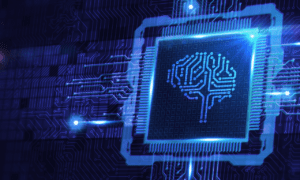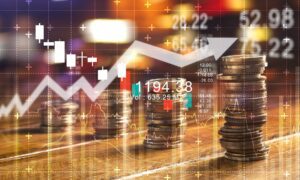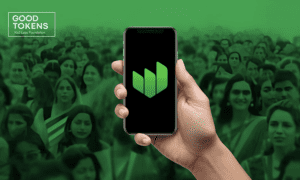Cryptocurrencies are moving out of pure speculation and into real-life use cases, such as powering payments, securing supply chains, and enabling entirely new economic models. From AI-powered automation to trading renewable energy, there is a clear demonstration of tackling real problems with blockchain. I might add that investors focused on short-term gains are likely to overlook the fact that most big opportunities lie not in theory, but in real-world applications that change the game.
Crypto in everyday transactions
Cryptocurrencies are no longer just speculative assets; they are now being integrated into everyday payments. From online retail checkouts up to in-store point-of-sale systems, more and more merchants are starting to accept digital currencies as well, alongside credit cards. This not only involves some novelty, but it also gives customers more choices, potentially lowering the business’s transaction fees.
International remittances are also done through crypto. Before, people had to pay large fees and wait several days for clearance when sending money abroad. Now, digital assets enable them to transfer practically instantly at a very minimal cost. This means more cash in the hands of families who depend on incomes from overseas, with fewer middlemen taking a cut.
Stablecoins play a significant role in bringing cryptocurrency closer to mainstream finance. They are pegged to fiat currencies, thus removing the element of volatility that often scares first-time users away. For example, a freelancer can receive payment in stablecoins, easily convert them to local currency, or even spend them directly without having to worry about overnight value swings.
Not everybody is thinking about practical use cases. Many are still in pursuit of the thrill of finding the next crypto to explode in August 2025. This puts buyers among the several traders and investors who are positioned to earn significantly from the crypto sector. While this pursuit is exciting, others find additional value in crypto quietly making life easier for millions of users.
AI, robotics, and blockchain integration
Blockchain is the natural partner being developed for autonomous machines. If robots are going to make transactions, they will need an immutable and transparent record of whether it is paying for their own maintenance or ordering parts. Blockchain will ensure that every exchange is verifiable, tamper-proof, and easily auditable, the essentials when machines are making independent financial decisions.
Artificial intelligence is also modifying the management of supply chains. By merging the predictive strengths of AI with the assurance instruments of blockchain, firms can monitor products in real-time as well as confirm each phase of the process. This cuts down on deceit, enhances conveyance periods, and instills more trust in businesses and customers regarding what they are purchasing.
Robotic process automation also begins to embrace smart contracts. Rather than wait on a human approver or trigger, the robot can automatically perform its functions once conditions verified by blockchain have been fulfilled. Some of the tasks it is already streamlining include manufacturing, maintenance scheduling, and even service agreements between companies.
There are also token economies designed for AI. In this, tokens are earned by the completion of tasks by the AI systems or robots, and they “spend” them to acquire other services or resources. Practically, it mirrors human economies but exists solely within the digital and automated world.
Blockchain in supply chain transparency
The knowledge of where a product comes from- and proving it- has never been more critical. Blockchain can deliver such immutability in tracking goods from the source to the shelf – immutability that lays the groundwork for transparency, enabling brands to build trust and consumers to make better, informed choices.
Counterfeit goods remain one of the biggest global problems, but blockchain offers a strong defense. When product data is on-chain, every step in the product’s journey can be verified separately. It becomes significantly more challenging for counterfeit goods to enter the supply chain undetected. The end-consumer and reputable brands get protected.
Additionally, blockchain supports sustainability claims. On-chain certifications for ethically sourced material and eco-friendly production make them much easier to verify. This enables companies to differentiate themselves in an increasingly environmentally conscious market without being accused of greenwashing.
Cost and efficiency gains will be another major driving force. When every link in the chain can be verified instantly, businesses spend less time and money on audits, dispute resolution, and compliance checks. That frees up resources for innovation and better service for end customers.
Tokenizing real-world assets
Real estate historically has been one of the least accessible markets for smaller investors. The move to tokenization changes all that. Fractional ownership offers investment in property with significantly less capital, yet all the security and transparency of blockchain transactions. Please note that, as of 2024, the global tokenization market was valued at USD 3.32 billion.
Also moving on-chain are art and collectibles. By tokenizing ownership, an investor can purchase, sell, or trade a stake in a valuable asset without physically possessing it. This will enable people to participate in the market as art lovers or collectors, a privilege previously reserved for the wealthy.
Even commodities are going digital, with gold, oil – you name it. The process is much easier to trade when tokenized, eliminating the logistical nightmares of moving physical goods across the globe. It would also mean shorter settlement times and much easier access to global markets.
Hence, the complete democratization of investment opportunities. Breaking away from giant minimum investment barriers and complex brokerage processes to access a diverse array of assets is as simple as having a digital wallet and clicking a few times.
Final words
The shift from the hype of an investment case to real utility is redefining the role of cryptocurrencies within the global economy. Real-world adoption is gaining speed, opening massive opportunities for investors, innovators, and everyday users alike. Anyone who grasps and adopts these implementations now stands a better chance of capitalizing on the opportunities that the future of blockchain holds.




